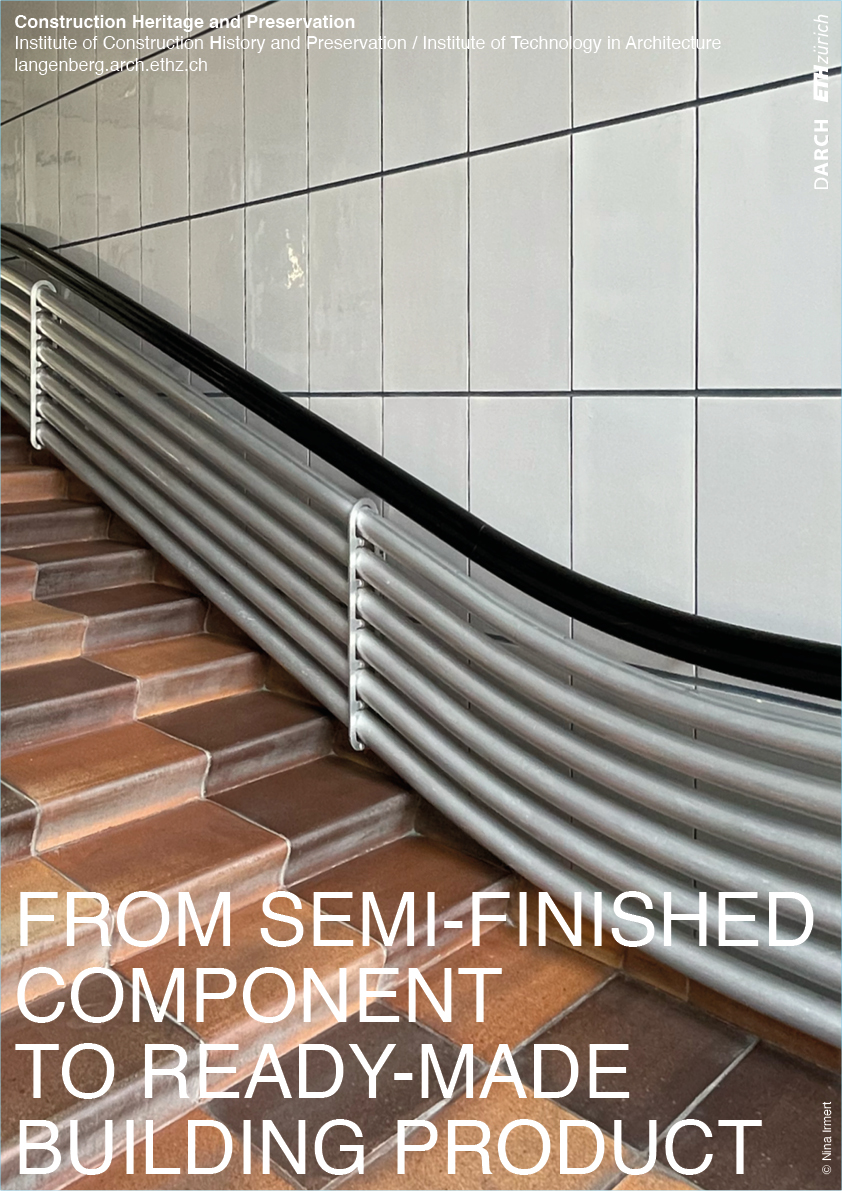
Doctoral Candidate: Nina Irmert
Co-Examiner: Prof. Dr. Andreas Schwarting, Chair of History and Theory of Architecture, HTWG Konstanz
Internal Co-Supervisor: PD Dr. Robin Rehm
By the 1920s, the building industry increasingly produced – and used – new types of metal elements. They co-existed alongside previously established components made of cast or wrought iron, brass and zinc, occasionally replacing them altogether. Large industrial companies as well as small and medium-sized metal workshops drove the development of these new metallic products. At the same time, state institutions such as the ETH and Empa were researching into innovative areas of application. Patents played a central role within this context: They secured the temporary property right on the published technical innovation for the person or company filing the application. But they also promoted the further development of inventions that were already protected. The disclosure inherent to patenting at the same time was a method for the state to control the quality of the invention.
The wide spectrum of metal elements in architecture soon became almost impossible to keep track of. In 1930, the Swiss Architects’ Association (BSA) – following the example of the American Sweets Catalog and the Bauwelt Katalog – reacted to the increasing complexity of the product range and issued the Schweizer Baukatalog which was now published annually. Multiple new metal components were used for the first time in the «New Objectivity» of residential and industrial construction as well as in public buildings such as schools, hospitals, or administrations. On the other hand, the elements were increasingly used in conversions and extensions of already existing buildings. This development also applies to the building stock of ETH Zurich. From 1930 to 1960, the university was able to modernise its historic building stock with the help of new metal products. At the beginning of the 1960s, metal elements once again were given a formative new building task: this time in the form of large-scale façade systems and lightweight interior fittings for the laboratories and teaching buildings on the emerging campus ‘Hönggerberg’.
The doctoral project examines several case studies from the ETH building stock to investigate the emergence and specialisation of diverse metal elements between 1930 and 1960. Patents in this context are understood as strategic instruments that disclose inventions on the one hand, and at the same time cover up what is to be legally protected. This paradox shall be explored critically. In so doing, the project provides a new perspective on a so far little-noted architectural history that has been shaped by science and industry.
This project is part of the SNSF project “Architecture & Patents. The Buildings of the ETH Domain”.
